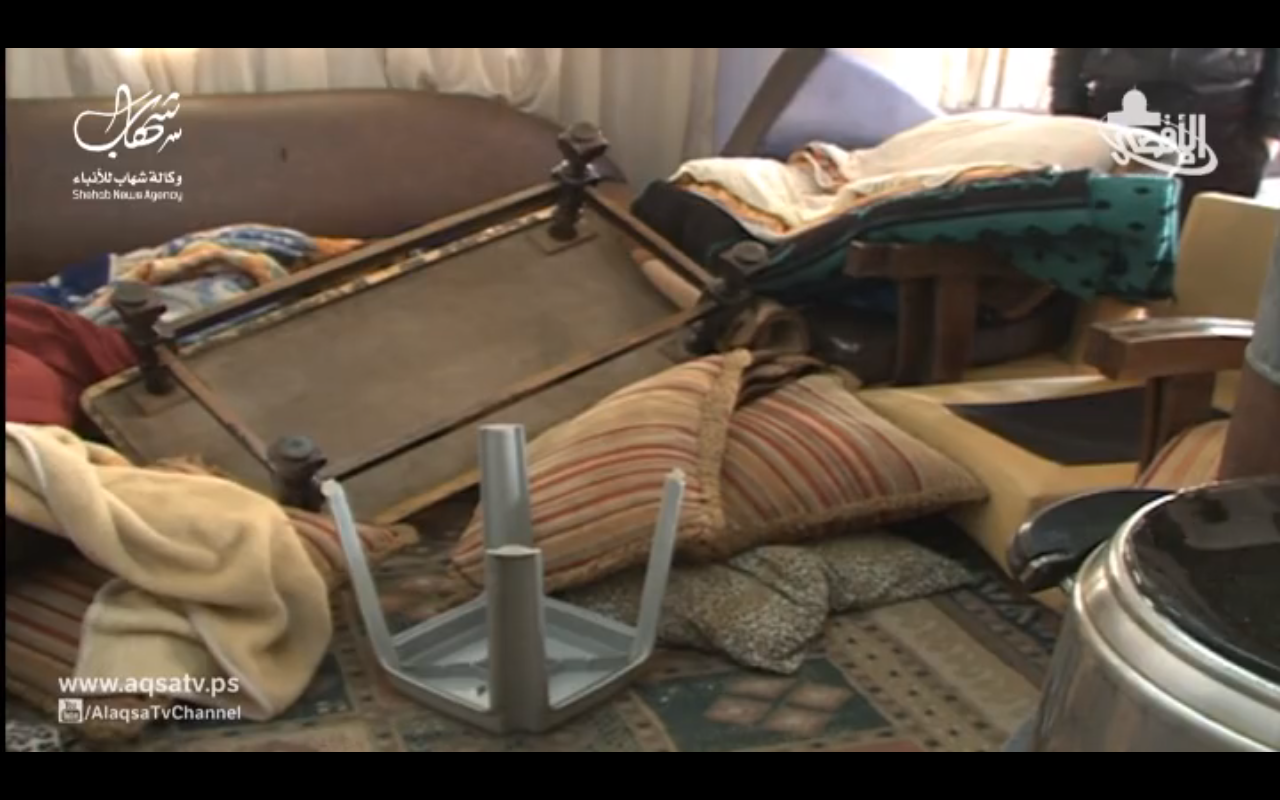Tag: Beit Ummar
-
Night raid in Beit Ummar: arrests, violence and property destruction
18th January 2015 | International Solidarity Movement, Hebron team | Beit Ummar, Occupied Palestine Early Wednesday morning, January 14, 2015, a massive deployment of 400 Israeli occupation forces invaded the village of Beit Ummar, north of Hebron. From 2:00 – 5:00 am, the occupation forces invaded approximately 100 Palestinian homes, arresting 25 males and leaving notices for 15 additional…
-
Video: Soldiers violently attack and arrest peaceful protesters in Al-Masara
17th August 2013 | International Solidarity Movement, Khalil Team | Al-Masara, Occupied Palestine Yesterday, the 16th August, four people were violently arrested at a peaceful demonstration taking place near the village of Al-Masara, on the outskirts of Hebron (Al Khalil). Around sixty demonstrators calling for the dismantlement of illegal Israeli settlements upon Palestinian land were…
-
Video- Fifth Canaan protest village built on annexed Palestinian land in the middle of the illegal Gush Etzion Colonial block
27th July 2013 | International Solidarity Movement, Khalil Team | Canaan village, Occupied Palestine The Canaan protest village was built for the fifth time today, the 27th July 2013, annexed Palestinian land in the middle of the illegal Gush Etzion Colonial block next to the illegal colony of Migdal Oz. The nonviolent protesters stayed in…


